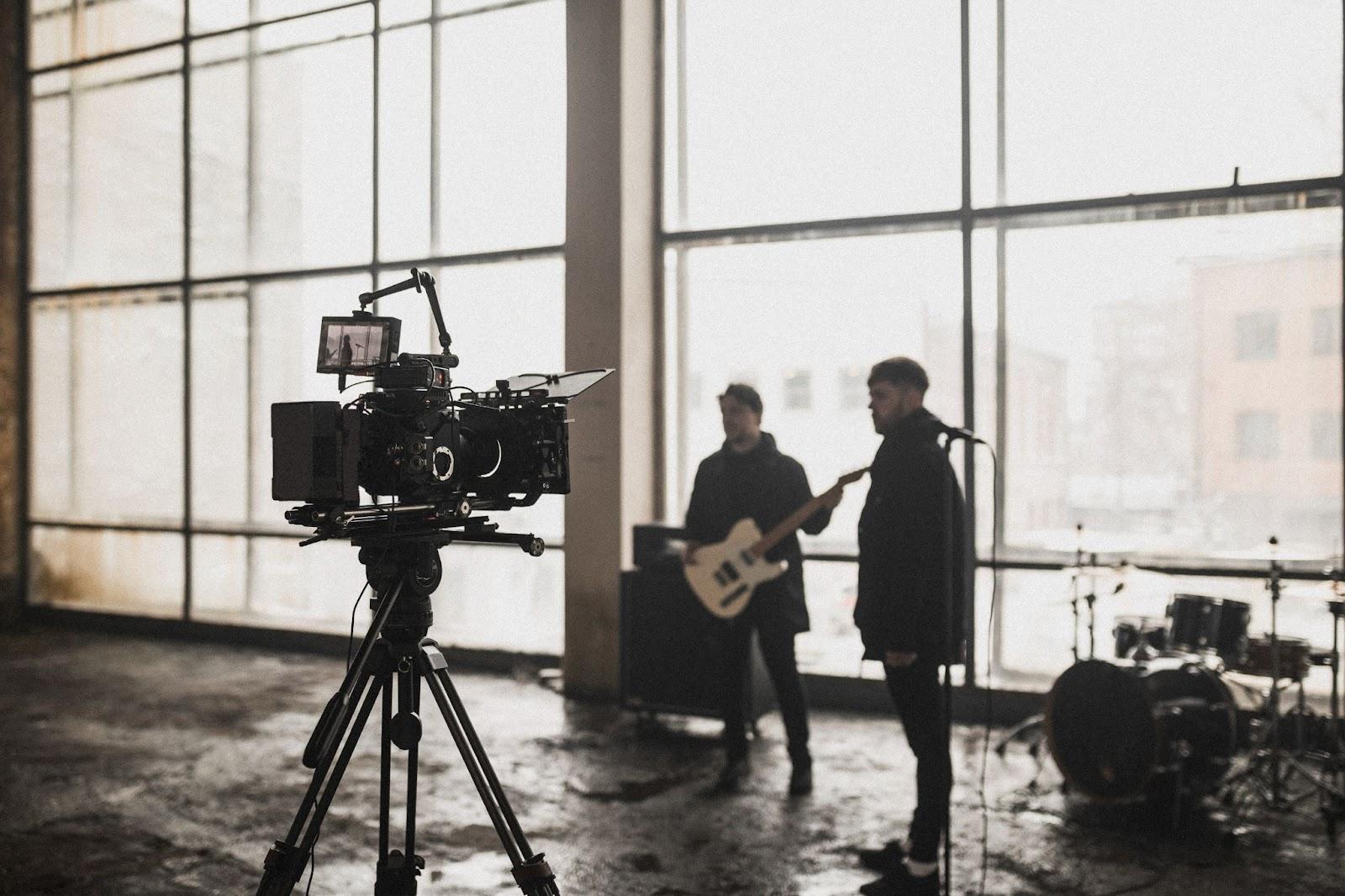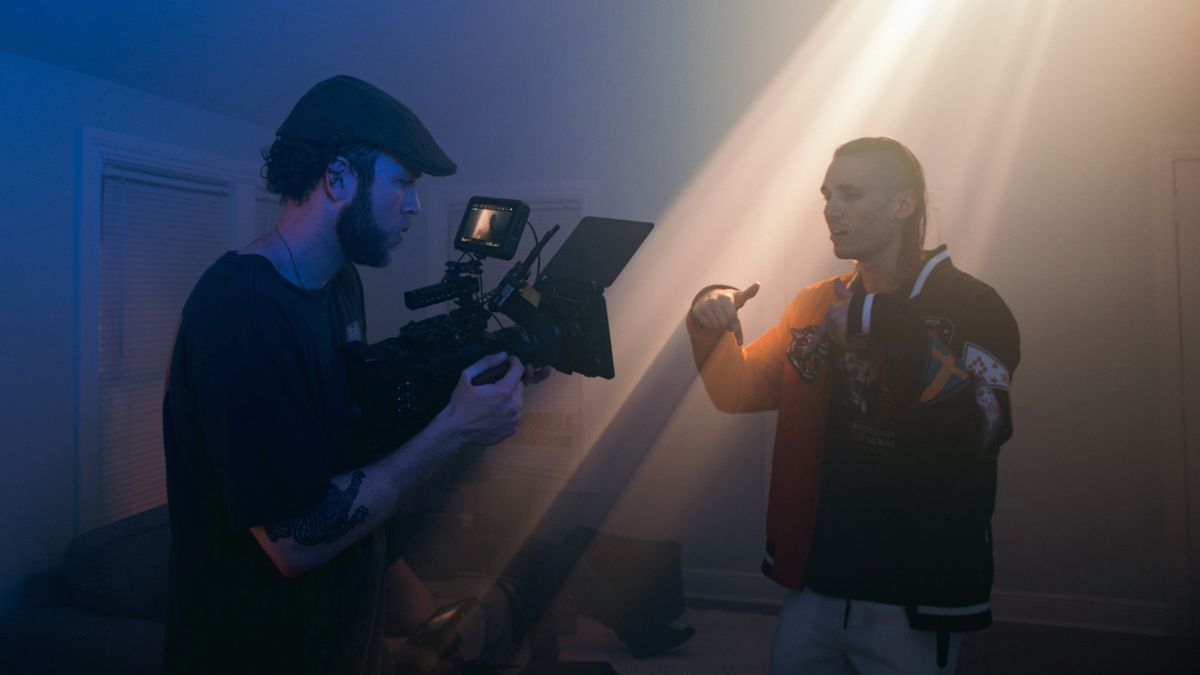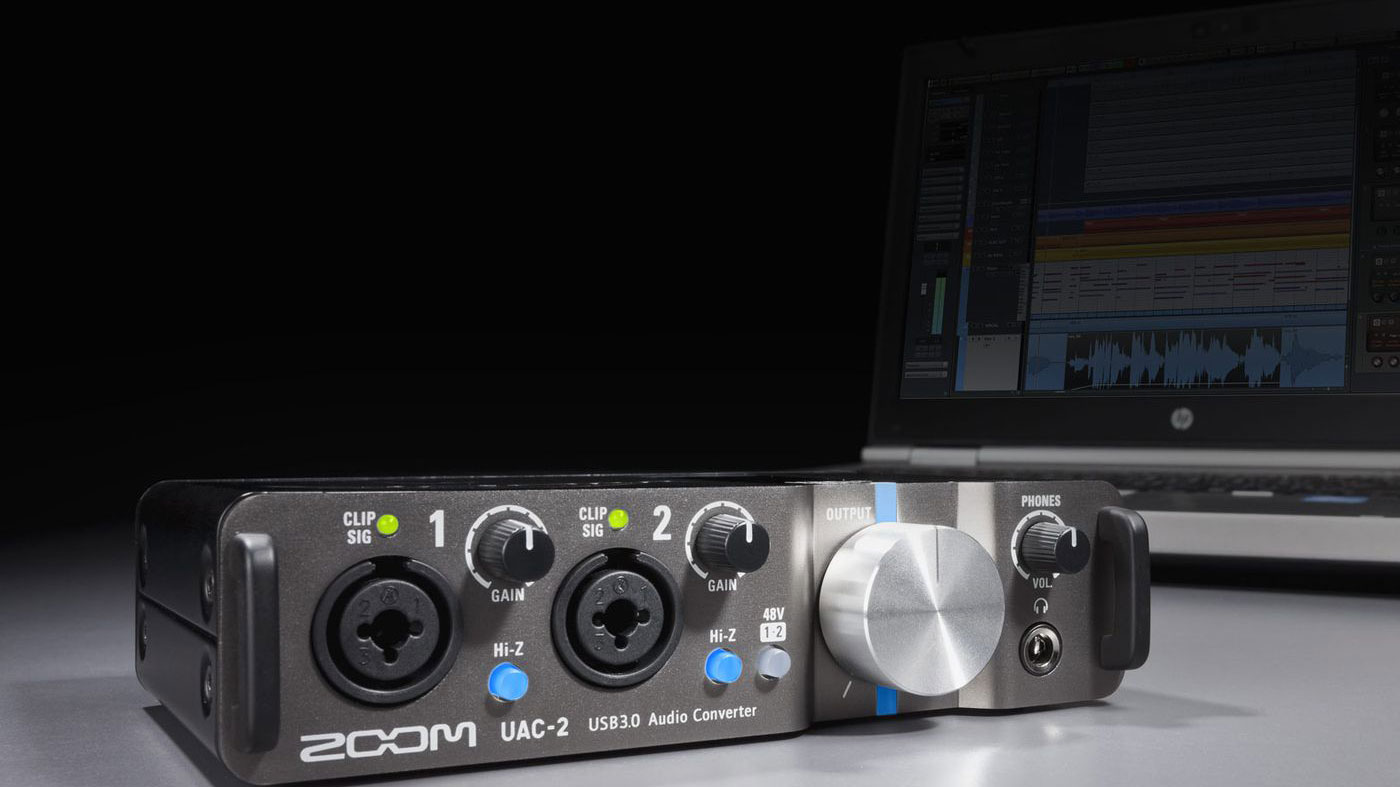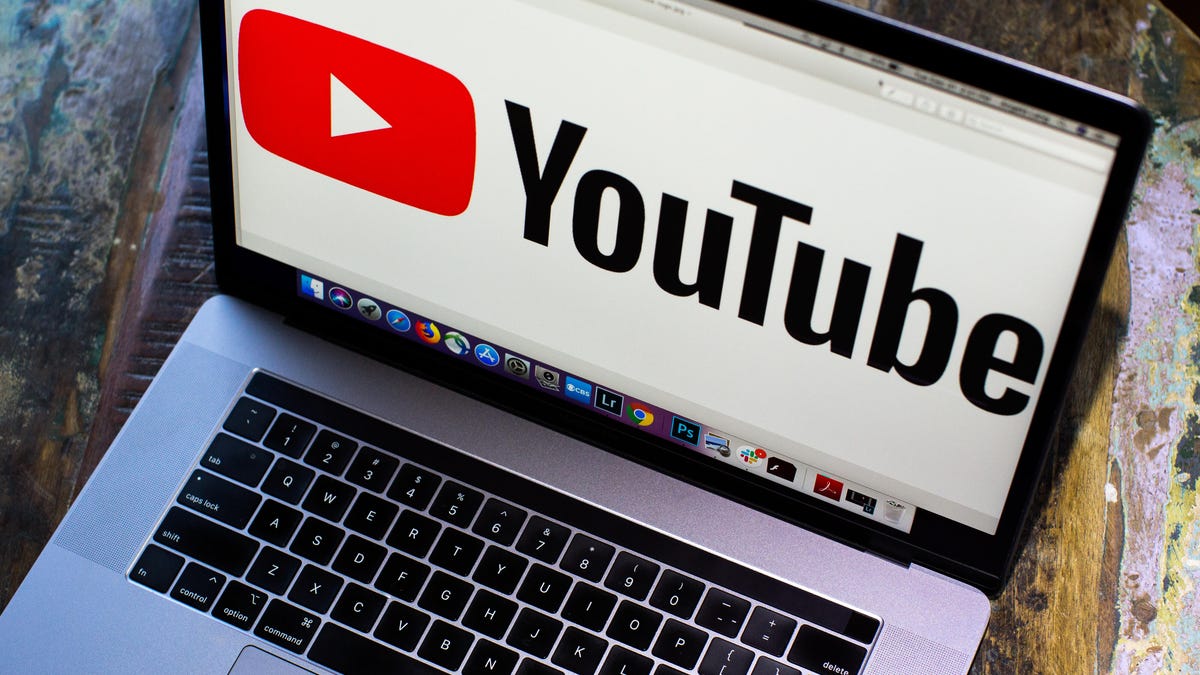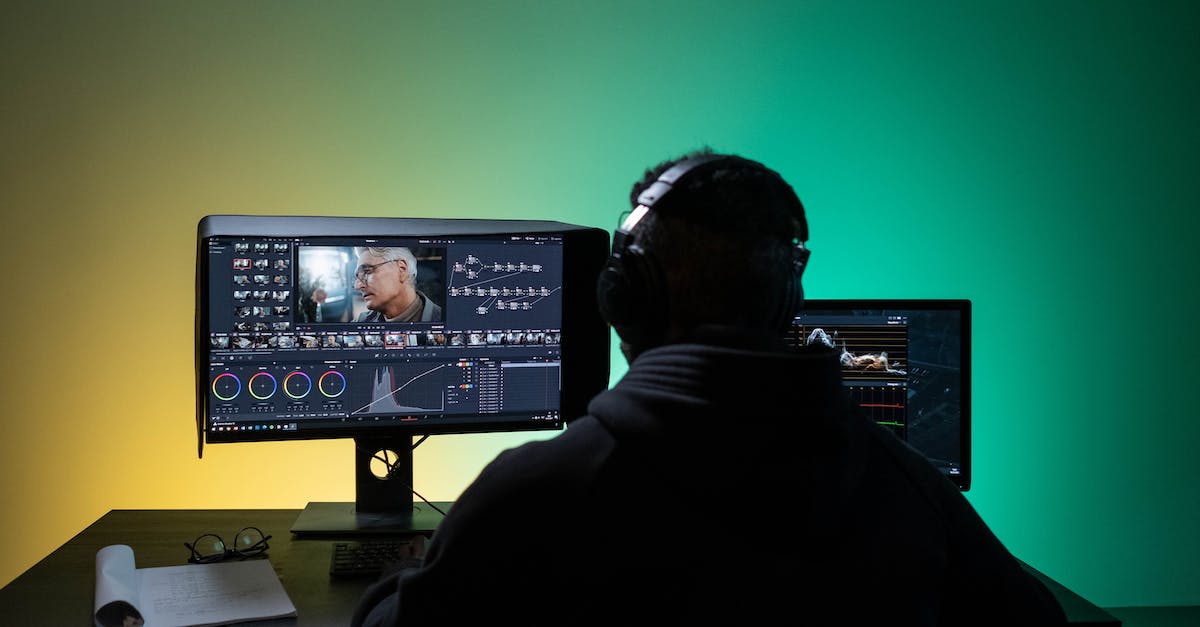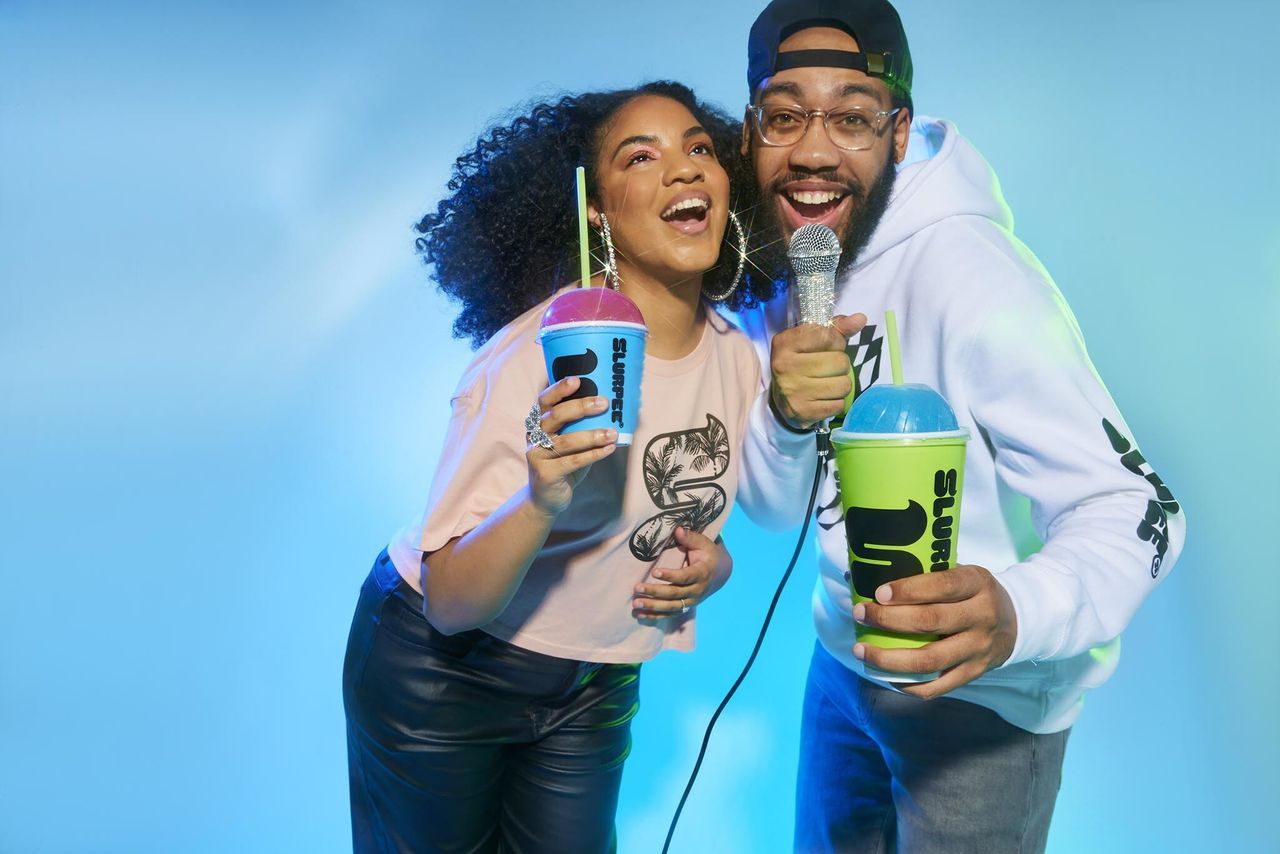Home>Production & Technology>Music Video>How To Promote My Music Video
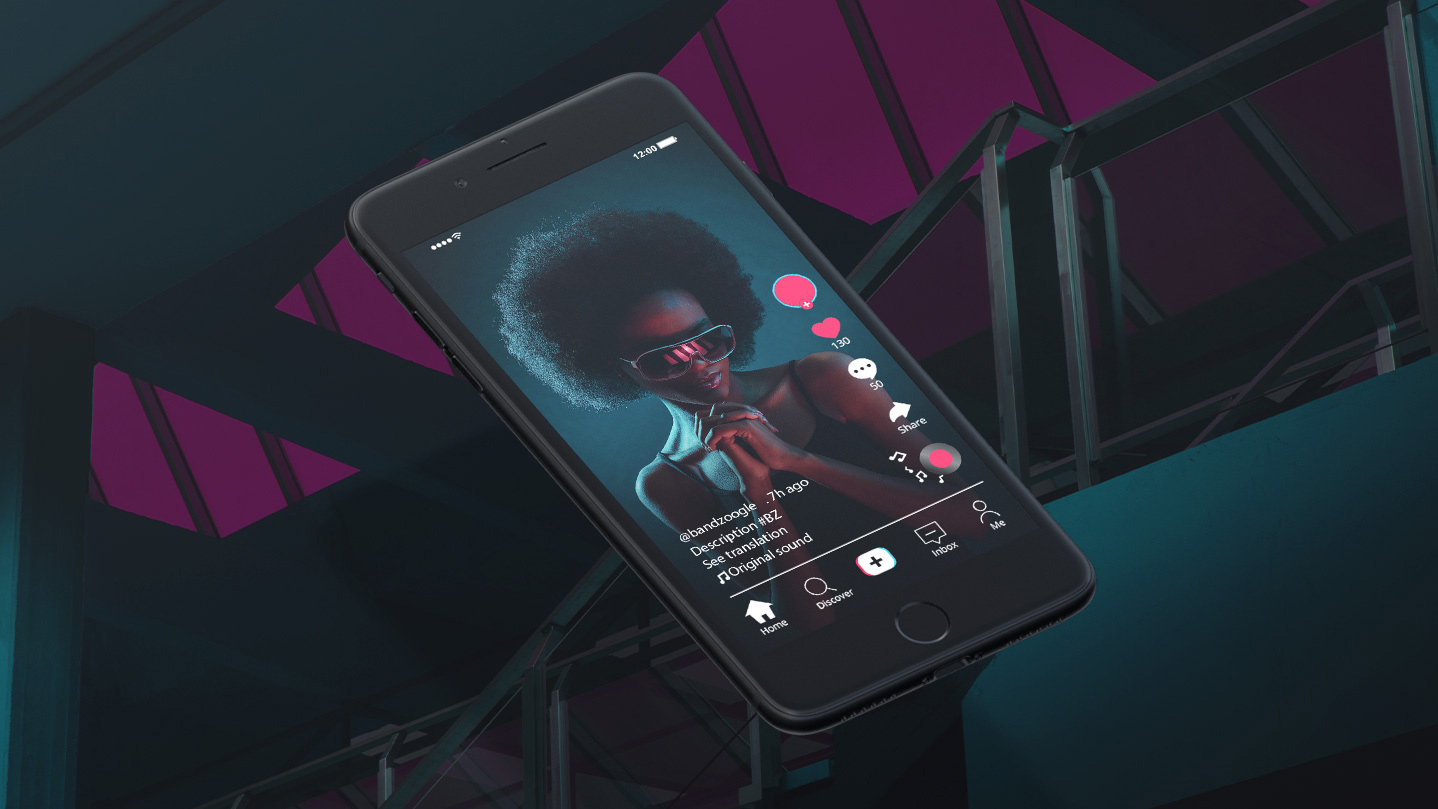

Music Video
How To Promote My Music Video
Published: November 17, 2023
Want to promote your music video? Learn effective strategies and techniques to reach a wider audience and gain more views for your music video. Discover the secrets to successful music video promotion.
(Many of the links in this article redirect to a specific reviewed product. Your purchase of these products through affiliate links helps to generate commission for AudioLover.com, at no extra cost. Learn more)
Table of Contents
- Introduction
- Choosing the Right Platform
- Creating a Captivating Thumbnail
- Crafting an Engaging Title
- Writing an Effective Description
- Optimizing Tags and Keywords
- Sharing on Social Media
- Collaborating with Influencers
- Promoting through Paid Advertising
- Engaging with Fans and Viewers
- Monitoring and Analyzing Performance
- Conclusion
Introduction
In today’s digital age, music videos have become an integral part of the music industry. With the rise of platforms like YouTube, Vevo, and Vimeo, artists now have a powerful tool to promote their music and visually connect with their audience. However, with millions of videos being uploaded every day, it can be challenging for aspiring musicians to stand out and gain traction for their music videos.
This article will provide valuable insights and strategies on how to effectively promote your music video in the competitive online landscape. From choosing the right platform to engaging with fans, we will explore the key steps you need to take to maximize exposure and reach a wider audience.
Before diving into the strategies, it’s important to understand the significance of a well-executed music video. Music videos have the power to captivate and engage viewers, bringing the artist’s vision to life. They allow musicians to showcase their creativity, storytelling abilities, and unique style. A compelling music video not only enhances the overall music listening experience but also leaves a lasting impression on the audience.
Now, let’s delve into the various tactics and techniques that will help you promote your music video effectively, ensuring that it reaches the right audience and generates the attention it deserves.
Choosing the Right Platform
When it comes to promoting your music video, selecting the right platform is key. There are numerous video hosting platforms to choose from, each with its own unique features and audience demographics. Understanding the strengths and weaknesses of each platform will help you make an informed decision and ensure that your music video gets the exposure it deserves.
YouTube is undoubtedly the largest and most popular video-sharing platform, with billions of users worldwide. It offers a vast music community, making it an ideal platform for reaching a wide audience. With its user-friendly interface and robust search engine optimization (SEO) capabilities, YouTube allows you to optimize your videos for increased visibility.
For artists who want to focus exclusively on music videos, Vevo might be the perfect choice. Vevo is a music video hosting service that partners with major record labels to feature high-quality music videos from top artists. By uploading your music video to Vevo, you can tap into a dedicated music audience and potentially gain more exposure among music enthusiasts.
If you’re looking for a platform that caters to a more artistic and niche audience, Vimeo might be the right fit for you. Vimeo prides itself on its high-quality video content and offers a more sophisticated and curated experience. Artists who prioritize aesthetics and creativity often choose Vimeo to showcase their music videos.
Aside from these major platforms, there are also niche platforms that cater to specific music genres or demographics. For example, Dailymotion, a popular video-sharing platform, is known for its diverse user base and music video content. Additionally, platforms like TikTok and Triller have gained significant popularity among the younger generation, providing unique opportunities for music video promotion.
Ultimately, the choice of platform will depend on your target audience, music genre, and marketing strategy. It’s essential to research and analyze the demographics and reach of each platform to ensure that your music video reaches the right audience. Consider utilizing multiple platforms to maximize your video’s exposure and engage with a wider range of viewers.
Creating a Captivating Thumbnail
One of the most important elements of promoting your music video is creating a captivating thumbnail that grabs viewers’ attention. A thumbnail serves as a visual representation of your video and is often the first thing viewers see when scrolling through search results or suggested videos. A well-designed and eye-catching thumbnail can significantly increase the click-through rate and attract more viewers to your video.
Here are some tips to create a captivating thumbnail for your music video:
- Choose an engaging image: Select an image from your music video that captures the essence and visual appeal of the video. It could be a still image of an exciting moment, an expressive close-up of the artist, or a visually striking scene. Avoid using generic or uninteresting images that may fail to grab attention.
- Use bold and legible text: Add clear and easily readable text on the thumbnail to convey the title of the song or any other important information. Choose a font style and color that aligns with the overall aesthetic of your music video while ensuring that the text stands out against the background.
- Experiment with colors and contrast: Use vibrant and contrasting colors to make your thumbnail visually appealing and attention-grabbing. Consider using color schemes that align with the mood or theme of your music video. A well-balanced color palette can enhance the overall impact of your thumbnail.
- Incorporate branding elements: Include your artist or band logo, name, or any recognizable branding elements in the thumbnail. This helps in establishing your brand identity and can make it easier for viewers to recognize your videos across different platforms.
- Keep it simple and uncluttered: Avoid overcrowding the thumbnail with too many elements or text. A cluttered thumbnail can be visually overwhelming and may not effectively convey the essence of your music video. Keep the design clean, simple, and focused.
Remember, the thumbnail is a preview of your music video and should accurately represent its content while piquing viewer curiosity. Regularly monitor the performance of different thumbnails and make adjustments based on viewer engagement data. A compelling and visually appealing thumbnail can significantly increase the chances of viewers clicking and watching your music video, ultimately boosting its promotion and reach.
Crafting an Engaging Title
The title of your music video plays a crucial role in attracting viewers and enticing them to click and watch. It should be catchy, descriptive, and capable of capturing the essence of your video in just a few words. A well-crafted title can significantly enhance the discoverability and promotion of your music video. Here are some tips to help you create an engaging title:
- Be concise and to the point: Keep your title short and concise while effectively conveying the main theme or message of your music video. Avoid long and convoluted titles that may confuse or deter potential viewers.
- Include relevant keywords: Incorporate keywords that are relevant to your music genre, artist, or the story portrayed in your video. This will improve the SEO of your video and make it more discoverable in search engine results.
- Add a touch of creativity: Stand out from the crowd by infusing a creative and unique element into your title. This could be a clever wordplay, a catchy phrase, or a hint at the visual or audio experience viewers can expect from your music video.
- Create intrigue and curiosity: Spark curiosity and generate interest by leaving a little mystery in your title. Use cliffhangers, intriguing words, or thought-provoking statements to pique the viewer’s interest and motivate them to click and watch your video.
- Consider your target audience: Tailor your title to appeal to your target audience. If your music video caters to a specific genre or demographic, make sure the title reflects that and resonates with your intended audience.
- Experiment with different variations: Don’t settle for the first title that comes to mind. Consider creating multiple variations of your title and test them out to see which one performs better in terms of viewer engagement and click-through rates.
Remember, the title is one of the first things viewers see when coming across your music video. It should capture their interest, make them curious, and compel them to click and watch. Regularly monitor the performance of your video and, if necessary, make adjustments to the title based on viewer engagement data to improve the promotion and visibility of your music video.
Writing an Effective Description
The description of your music video is an opportunity to provide more context, engage with viewers, and optimize your video for search engines. A well-written and informative description can not only entice viewers to watch your video but also improve its discoverability and ranking in search results. Here are some tips to help you write an effective description:
- Start with a compelling hook: Begin your description with a compelling sentence or two that grabs the viewer’s attention. This hook should summarize the main theme or story of your music video and create intrigue.
- Provide a brief summary: Give viewers a concise overview of what they can expect from your music video. Highlight key elements such as the storyline, visuals, choreography, or any notable collaborations.
- Include relevant information: Provide relevant details about the song, artist, and any other pertinent information. This could include the release date, album or EP information, production credits, or any inspirations behind the music video.
- Add timestamps: If your music video has different sections or notable moments, consider adding timestamps in the description. This allows viewers to easily navigate to specific parts of the video and enhances their viewing experience.
- Optimize for SEO: Incorporate relevant keywords throughout your description to improve the discoverability of your video. Use keywords that are related to your music genre, artist, or the story depicted in the video.
- Include call-to-action (CTA) : Encourage viewers to engage further with your music and channel by including a call-to-action in the description. This could be asking them to subscribe, like, comment, or share the video.
- Add external links: If you have a website, social media profiles, or other online platforms, include links in the description. This allows viewers to connect with you outside of the video and further explore your content.
Remember to strike a balance between providing comprehensive information and keeping the description concise and easily digestible. Use paragraphs and bullet points to break up the text and make it more readable. Regularly update the description to include any relevant updates, such as tour dates, new releases, or collaborations.
An effective description not only helps viewers understand your music video better but also enhances its visibility and chances of discovery. Invest time in crafting a compelling and informative description to maximize the promotion and engagement of your music video.
Optimizing Tags and Keywords
Tags and keywords play a critical role in optimizing your music video for search engines and making it more discoverable to potential viewers. By strategically selecting relevant tags and keywords, you can improve the visibility and promotion of your video. Here are some tips to help you effectively optimize your tags and keywords:
- Research popular and specific keywords: Conduct keyword research to identify popular and specific keywords related to your music video. Tools like Google Keyword Planner or YouTube’s own search suggest feature can help you discover relevant keywords with high search volumes.
- Include a mix of general and niche terms: Use a combination of general keywords that have high search volumes and specific niche keywords that cater to your target audience. This allows you to cast a wider net while still reaching viewers who are more likely to be interested in your music.
- Utilize long-tail keywords: Long-tail keywords are more specific and less competitive than generic keywords. They help you target a more focused audience, increasing the chances of your video being discovered by viewers who are specifically searching for that type of content.
- Incorporate variations of keywords: Include variations of your main keywords to capture different search intents. This could include synonyms, related terms, or alternate phrasing. It helps ensure that your video appears in a wider range of search results.
- Add tags relevant to your music genre, artist, and video: Include tags that accurately represent your music genre, artist name, song title, and any other relevant information about your video. These tags enhance the chances of your video being recommended to viewers with similar interests.
- Tag collaborators and featured artists: If your music video features collaborations with other artists or notable individuals, be sure to tag them in your video’s tags. This can expand the reach of your video and potentially attract their fan base.
- Regularly update and refine your tags: Keep track of the performance of your video and analyze the search terms that are driving traffic to your video. Based on this data, make adjustments to your tags and keywords to better target your audience and improve the promotion of your video.
Remember, while it’s important to optimize your tags and keywords, avoid overstuffing them or using misleading tags. Always aim for relevance and accuracy to ensure that your video reaches the right audience and maintains its integrity.
By incorporating relevant tags and keywords, you can increase the visibility and discoverability of your music video, maximizing its promotion and attracting more engaged viewers to enjoy your content.
Sharing on Social Media
Social media platforms present a powerful opportunity to promote your music video and connect with your audience on a more personal level. By leveraging the reach and engagement potential of social media, you can significantly enhance the promotion of your music video. Here are some tips for effectively sharing your music video on social media:
- Create engaging posts: Craft compelling and eye-catching social media posts that capture the essence of your music video. Use high-quality visuals, intriguing captions, and relevant hashtags to attract attention and generate interest.
- Utilize multiple platforms: Share your music video across various social media platforms to maximize your reach and engage with a wider audience. Some popular platforms to consider include Instagram, TikTok, Twitter, Facebook, and Snapchat. Tailor your content to each platform’s unique features and audience preferences.
- Collaborate with influencers: Partnering with influencers or popular content creators in the music industry can amplify your video’s reach and exposure. Seek out influencers who align with your music genre or target audience, and collaborate on promotional posts or features of your music video.
- Share behind-the-scenes content: Give your audience a sneak peek into the making of your music video. Share behind-the-scenes photos, videos, or anecdotes to build anticipation and create a sense of exclusivity.
- Engage with your audience: Respond to comments and messages from your audience to foster a sense of community and build relationships. Engage in conversations, ask for feedback, and show your appreciation for their support.
- Encourage sharing and user-generated content: Encourage your fans and followers to share your music video on their own social media profiles. Consider running contests or campaigns that prompt users to create their own content related to your video, generating buzz and extending your video’s reach.
- Optimize for platform algorithms: Understand the algorithms of each social media platform and optimize your posts accordingly. Utilize features like Instagram Reels, TikTok duets, or hashtag trends to increase visibility and attract more viewers to your video.
- Promote your music video through paid ads: Allocate a portion of your marketing budget towards targeted social media advertising. Platforms like Facebook Ads and Instagram Ads allow you to reach specific demographics, interests, and locations, ensuring that your video is seen by the right audience.
Remember, social media is a dynamic and ever-evolving space. Stay attuned to trends, engage with your audience authentically, and adapt your strategy accordingly. By effectively leveraging social media platforms, you can amplify the reach of your music video and connect with fans on a deeper level.
Collaborating with Influencers
Collaborating with influencers in the music industry can be a powerful strategy to promote your music video and expand its reach. Influencers have a dedicated and engaged following, providing you with an opportunity to tap into their audience base and gain exposure. Here are some tips for effectively collaborating with influencers:
- Identify the right influencers: Research and identify influencers who align with your music genre, target audience, and brand values. Look for influencers who have a substantial following and a genuine interest in promoting music-related content.
- Build authentic relationships: Approach influencers with a genuine interest in their work and a personalized pitch. Engage with their content, comment on their posts, and build a relationship before reaching out for collaboration opportunities.
- Offer value in the collaboration: Provide influencers with an incentive to collaborate, whether it’s an exclusive preview of your music video, access to behind-the-scenes content, or a unique opportunity to connect with your music and brand. Ensure that the collaboration is mutually beneficial.
- Create compelling content together: Collaborate with influencers to create engaging and unique content related to your music video. This could include reaction videos, review discussions, dance challenges, or even a feature in their own content. The goal is to generate buzz and excitement around your music video.
- Utilize their platforms: Leverage the influencer’s platforms and audience by having them post about your music video on their social media profiles, website, or YouTube channel. Their endorsement will lend credibility and attract their followers to watch your video.
- Monitor and track performance: Keep track of the engagement and reach generated by the influencer collaboration. Analyze metrics such as views, likes, comments, shares, and new subscribers to measure the impact of the collaboration. Use this data to refine your influencer strategy in the future.
- Explore long-term partnerships: Consider establishing long-term partnerships with influencers who consistently support and resonate with your music. Building an ongoing relationship can lead to multiple collaborations over time, creating a loyal fan base and generating sustained promotion for your music videos.
- Stay true to your brand: While collaborating with influencers, ensure that their content aligns with your brand values and artistic vision. It’s crucial to maintain authenticity and integrity throughout the collaboration process.
Remember, influencer collaborations can provide valuable exposure and engagement for your music video. Choose your partnerships wisely, foster genuine relationships, and create compelling content together. By working with influencers, you can tap into their audience and expand the reach of your music video beyond your organic following.
Promoting through Paid Advertising
While organic promotion is important, utilizing paid advertising can significantly boost the visibility and reach of your music video. Paid advertising allows you to target specific demographics, interests, and locations, ensuring that your video is seen by the right audience. Here are some tips for effectively promoting your music video through paid advertising:
- Define your goals and budget: Determine your advertising goals and set a budget that aligns with your marketing strategy. Whether you aim to increase views, gain new subscribers, or drive traffic to your website, having clear objectives will help you optimize your ad campaigns.
- Choose the right platforms: Select platforms that offer robust advertising capabilities and align with your target audience. Social media platforms such as Facebook, Instagram, YouTube, and Twitter provide detailed targeting options and ad formats tailored for video promotion.
- Create compelling ad content: Design visually appealing and engaging video ads that capture the essence of your music video. Keep the ad concise, attention-grabbing, and aligned with your brand. Highlight the unique aspects of your video and include a strong call-to-action to encourage viewers to watch.
- Target specific demographics and interests: Utilize the targeting tools provided by the advertising platforms to narrow down your audience. Target by age, gender, location, and interests to ensure that your ad reaches people who are likely to be interested in your music genre or the theme of your video.
- Utilize remarketing: Implement remarketing strategies to target people who have previously engaged with your music or videos. This can include those who have watched your previous videos or visited your website. Remarketing helps reinforce your brand and increase conversion rates.
- A/B test your ads: Experiment with different variations of your ad content, such as different visuals, call-to-actions, or ad copy. A/B testing allows you to identify what resonates best with your audience and optimize your ads for better performance.
- Monitor and adjust: Continuously track the performance of your ad campaigns and make adjustments based on the data. Analyze key metrics such as click-through rates, conversion rates, and engagement rates to optimize your campaigns for better results.
- Explore advertising partnerships: Consider collaborating with influential media platforms or advertising networks specific to the music industry. These partnerships can provide targeted exposure and access to niche audiences interested in music-related content.
Paid advertising can be a valuable tool in promoting your music video and reaching a larger audience. However, it’s important to monitor your budget and adjust your strategies based on the performance of your campaigns. By optimizing your paid advertising efforts, you can effectively increase the visibility and promotion of your music video to target viewers and potential fans.
Engaging with Fans and Viewers
Engaging with your fans and viewers is essential for building a loyal and supportive community around your music video. By fostering meaningful connections and interactions, you can strengthen your fan base, encourage word-of-mouth promotion, and cultivate long-lasting relationships. Here are some tips for effectively engaging with your fans and viewers:
- Respond to comments and messages: Take the time to respond to comments on your music video across various platforms. Engage in conversations, answer questions, and express appreciation for the support. This shows fans and viewers that you value their input and are actively involved in the conversation.
- Create interactive content: Generate excitement and participation by creating interactive content related to your music video. This could include polls, quizzes, challenges, or contests that encourage fans to engage and share their experiences. Engaging content fosters a sense of community and encourages viewers to become active participants.
- Show behind-the-scenes footage: Offer glimpses into your creative process and share behind-the-scenes footage related to your music video. This exclusive content allows fans to feel closer to you as an artist and provides them with a unique perspective on the making of your music video.
- Feature fan-generated content: Showcase fan covers, fan art, or fan reactions related to your music video. Acknowledging and featuring fan content not only strengthens your relationship with them but also encourages others to engage and share their own creations.
- Host live events and Q&A sessions: Organize live events, such as live-streamed performances or Q&A sessions, to directly interact with your fans in real-time. This allows for a more personal connection and provides an opportunity to address their questions and insights.
- Encourage user-generated content: Prompt fans to create their own content inspired by your music video. This could include dance challenges, lip-sync videos, or cover contests. By encouraging user-generated content, you empower fans to become ambassadors of your music and extend the promotion of your video organically.
- Show appreciation for fan support: Regularly express gratitude to your fans for their support and involvement. Acknowledge milestones, birthdays, or special occasions of your fans to make them feel seen and appreciated. A little gratitude goes a long way in building a strong and supportive fan community.
- Collaborate with fans: Consider collaborating with fans on special projects or initiatives. Whether it’s featuring their artwork in upcoming music videos or inviting them to participate in exclusive experiences, involving fans in your creative process strengthens their connection to your music.
Remember, engagement is a continuous process. Consistently make an effort to interact with your fans and create opportunities for them to be actively involved in your music journey. By building a genuine connection with your fans and viewers, you can foster a dedicated community that supports and promotes your music video.
Monitoring and Analyzing Performance
Monitoring and analyzing the performance of your music video is crucial for understanding its impact, identifying areas for improvement, and refining your promotional strategies. By tracking key metrics and analyzing data, you can make informed decisions to optimize your video promotion and enhance its overall success. Here are some steps to effectively monitor and analyze the performance of your music video:
- Track key performance metrics: Identify the key metrics that align with your goals and track them regularly. These may include views, watch time, engagement rates, likes, shares, comments, and conversion rates. Platforms like YouTube, Vevo, and social media analytics provide valuable data to help you assess your video’s performance.
- Set up tracking and analytics tools: Utilize tracking and analytics tools to gain deeper insights into the performance of your video. Google Analytics, YouTube Analytics, and social media analytics provide detailed data on audience demographics, traffic sources, and viewer behavior. Use these tools to assess the effectiveness of your promotional efforts and make data-driven decisions.
- Compare performance to benchmarks: Benchmark your music video’s performance against industry standards or your previous videos. Analyze the growth rate, engagement rates, and other relevant metrics to understand if your video is meeting or surpassing expectations.
- Analyze audience demographics: Dive into the demographics of your video’s viewers to understand who is engaging with your content. Look at age, gender, location, and other relevant factors to tailor your promotional strategies and content to better resonate with your target audience.
- Identify viewer behavior patterns: Analyze viewer behavior, such as average watch time, drop-off points in the video, or click-through rates, to identify areas of improvement. This data can help you refine your content and optimize future videos to better engage your audience.
- Monitor engagement and feedback: Track viewer engagement through comments, likes, and shares, and pay attention to the sentiment and feedback. This allows you to gauge the audience’s response to your video and adjust your promotional strategies accordingly.
- Assess the impact of promotions: Evaluate the effectiveness of various promotional efforts, such as social media campaigns, influencer collaborations, or paid advertising. Analyze the corresponding data to determine the return on investment (ROI) and refine your future promotional strategies based on the most successful tactics.
- Adapt and refine your strategies: Based on the insights gained from monitoring and analyzing performance, make data-driven decisions to refine your promotional strategies. Continuously test and experiment with different approaches to improve the reach, engagement, and effectiveness of your music video promotion.
Remember, monitoring and analyzing the performance of your music video is an ongoing process. Regularly review the data, adjust your strategies, and optimize your promotional efforts to ensure the continued growth and success of your video.
Conclusion
Promoting your music video requires a strategic and multifaceted approach to maximize its reach, engagement, and overall success. By implementing the strategies discussed in this article, you can effectively promote your music video and increase its visibility in the competitive online landscape.
Choosing the right platform is crucial, as it determines the audience you will reach. Consider YouTube, Vevo, Vimeo, or niche platforms that align with your music genre and target demographics. Additionally, crafting a captivating thumbnail and an engaging title will help grab viewers’ attention and entice them to click and watch your video.
Writing an effective description that accurately conveys the essence of your music video, optimizing tags and keywords to improve discoverability, and sharing your video on social media platforms will further expand your video’s reach. Collaborating with influencers, implementing paid advertising, and engaging with your fans and viewers are additional strategies that can significantly boost the promotion and engagement of your music video.
Monitoring and analyzing the performance of your video is vital to understanding its impact and making informed decisions. Regularly track key metrics, review audience demographics, analyze viewer behavior, and adapt your strategies based on data-driven insights.
In conclusion, promoting your music video requires a combination of creativity, strategic thinking, and continuous monitoring. By leveraging the tips and strategies outlined in this article, you will be well-equipped to effectively promote your music video and connect with a wider audience, ultimately driving greater success for your music career.


